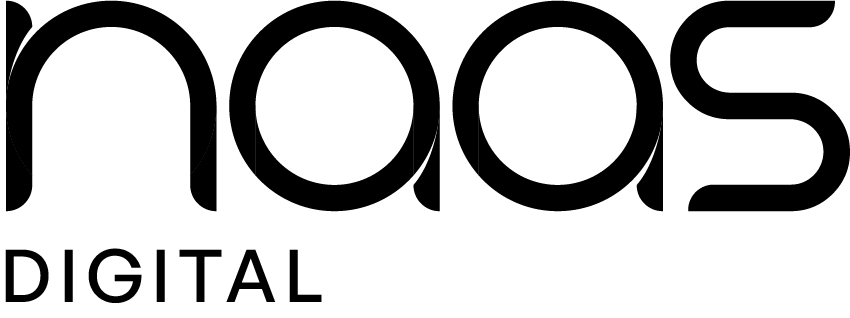Are you ready to think ahead and explore new possibilities for your business's digital future?
Partnering with us means working closely with a dedicated team committed to understanding your unique business goals and crafting a digital strategy that aligns with your vision.
Send us your contact email and we will contact you.
Are you ready to think ahead and explore new possibilities for your business's digital future?
© 2024 — NAAS Digital. All right reserved.
Privacy Policy
Visual Storytelling:
Use Visuals to Communicate Effectively
In an increasingly visual world, the power of images, videos, and graphics in telling a story cannot be overstated.
Visual storytelling is the art of using visuals to communicate messages, ideas, and emotions more effectively, especially in today’s fast-paced digital landscape. Whether it’s through infographics, video content, social media posts, or interactive designs, visuals have the ability to grab attention, evoke emotions, and make information easier to understand.
In this article, we’ll explore the importance of visual storytelling in modern communication, its key benefits, and how businesses can leverage this technique to engage their audiences. Additionally, we’ll discuss how NAAS Digital can help you master the art of visual storytelling and create content that resonates with your target audience.

What is Visual Storytelling?
Visual storytelling is a communication technique that involves using images, graphics, and videos to convey a narrative. Instead of relying solely on text, visual storytelling allows businesses and brands to engage with their audience in a more dynamic and memorable way. With the rise of social media platforms like Instagram, YouTube, and TikTok, visuals have become a crucial element in digital marketing and communication strategies.
A strong visual story is not just about showing a picture or a video. It’s about crafting a narrative that connects with your audience emotionally, provides clarity, and compels them to take action. From brand videos and animated explainers to simple social media posts, visual storytelling can be applied in various formats to communicate messages effectively.
The Importance of Visual Storytelling in Business
In a crowded marketplace where businesses are vying for consumer attention, visual storytelling helps brands stand out by delivering messages in a more engaging and memorable way. Here are some reasons why visual storytelling is crucial for businesses today.
1. Attention-Grabbing
Studies show that visuals are processed 60,000 times faster than text, and people retain 80% of what they see, compared to only 20% of what they read. Using visuals in storytelling grabs attention instantly and ensures that your message is remembered.
2. Evoking Emotions
Visuals have the power to evoke emotions more effectively than text. Whether it’s through color, composition, or the subject matter itself, visual elements can elicit feelings that resonate with audiences. Emotional engagement is key to building a strong connection with customers, and visual storytelling helps achieve that.
3. Simplifying Complex Ideas
Many businesses struggle to explain complex products or services through text alone. Visual storytelling simplifies these concepts by breaking them down into visual representations, such as infographics or explainer videos. This makes the information easier to digest and more accessible to a broader audience.
4. Increasing Engagement
Visual content is far more likely to be shared, liked, and commented on than text-based content. Social media platforms favor visually rich posts, and businesses using images, videos, and graphics in their marketing campaigns experience higher levels of engagement and interaction from users.
5. Building Brand Identity
Consistent use of visuals in your storytelling helps build and reinforce brand identity. Whether it’s through the use of color schemes, logos, or specific imagery, visual storytelling allows businesses to create a recognizable brand image that resonates with their audience across multiple channels.
Types of Visual Storytelling
There are many forms of visual storytelling, each suited to different types of content and audiences. Here are some of the most common types:
1. Infographics
Infographics combine text and visuals to present complex information in a visually appealing and easy-to-understand format. They are perfect for data-heavy topics where you want to highlight key statistics, trends, or comparisons.
2. Videos
Video content, such as brand stories, product demos, or customer testimonials, is one of the most powerful forms of visual storytelling. Videos allow businesses to communicate their message in a highly engaging format, complete with visual and auditory elements that capture attention.
3. Social Media Visuals
Images and short videos dominate platforms like Instagram, TikTok, and Facebook. Social media visuals can include anything from aesthetically curated posts to behind-the-scenes videos, live streaming, and stories that engage users in real time.
4. User-Generated Content
Encouraging customers to share their experiences through photos and videos is a powerful way to incorporate visual storytelling into your brand strategy. User-generated content not only showcases your product but also builds trust and credibility by showing real-life customer satisfaction.
5. Presentations and Slideshows
Presentations and slideshows, especially when enhanced with visuals, make complex information more digestible. Whether used for internal business meetings or as part of a sales pitch, visuals help convey key points more effectively.
Benefits of Visual Storytelling for Businesses
1. Improved Communication
Visual storytelling helps communicate messages more clearly and effectively. By using visuals to convey complex ideas, businesses can ensure their audience understands and engages with their content.
2. Stronger Emotional Connection
Visuals have the power to tell stories in a way that words often cannot. A well-crafted visual narrative can trigger emotions that align with your brand values, resulting in a deeper connection with your audience.
3. Increased Brand Awareness
Consistently using strong visuals across various platforms helps establish your brand in the minds of consumers. This increased brand recognition leads to greater trust, loyalty, and customer retention.
4. Enhanced Engagement
People are naturally drawn to visual content. A business that effectively uses visual storytelling can expect higher engagement rates, whether in the form of likes, shares, comments, or even conversions.
5. Boost in Conversion Rates
Visual storytelling not only helps attract more people to your brand but also guides them through the buyer’s journey. By engaging and educating users through visuals, businesses can lead customers toward making informed purchasing decisions, thus increasing conversion rates.
Challenges of Visual Storytelling
While visual storytelling offers numerous benefits, businesses must navigate several challenges to do it effectively:
1. High-Quality Visuals
Producing high-quality visuals that align with your brand identity can be time-consuming and expensive. Ensuring that images, videos, and graphics are professional and well-crafted is essential for maintaining credibility.
2. Consistency Across Channels
Maintaining consistency across multiple platforms can be difficult. A cohesive visual storytelling strategy requires all visuals to align with your brand’s tone, style, and message across social media, websites, and other platforms.
3. Measuring Success
While it’s easy to see the impact of visuals in terms of likes, shares, or comments, measuring the overall success of a visual storytelling campaign in terms of long-term business goals (like conversions or brand loyalty) can be more challenging.
Future Trends in Visual Storytelling
1. Immersive Content
As technology advances, immersive content such as virtual reality (VR) and augmented reality (AR) are becoming popular tools in visual storytelling. These technologies allow businesses to create experiences that engage users in new and exciting ways.
2. Interactive Visuals
Interactive infographics, shoppable videos, and clickable visual content are becoming more common. Interactive elements help increase user engagement and create a more dynamic and personalized experience for audiences.
3. AI and Automation in Visual Content
AI-powered tools are being developed to help businesses generate visuals more efficiently. From designing graphics to editing videos, AI will streamline the visual storytelling process while maintaining quality and creativity.
How NAAS Digital can help?
At NAAS Digital, we understand the power of visual storytelling in shaping brand narratives and creating meaningful connections with your audience. Our team of creative professionals excels in designing visual content that communicates your brand’s message clearly and emotionally.
Whether it’s developing engaging social media visuals, producing compelling video content, or designing custom infographics, NAAS Digital ensures that your visual storytelling is consistent, impactful, and aligned with your business objectives. We work closely with you to understand your brand’s unique identity and help craft visual stories that not only capture attention but also drive action.
We leverage the latest design tools and technology to create high-quality visuals across all platforms—social media, websites, mobile apps, and more—ensuring your audience is engaged, no matter where they interact with your brand. From conceptualization to execution, NAAS Digital is your partner in visual storytelling.
Conclusion
In today’s visually-driven digital environment, visual storytelling is a crucial tool for businesses aiming to stand out, communicate effectively, and engage their audiences. By using visuals strategically, brands can simplify complex messages, build emotional connections, and enhance their overall communication efforts.
While visual storytelling comes with its own set of challenges, the rewards are significant. Partnering with experts like NAAS Digital ensures that your brand can navigate these challenges successfully, creating visuals that not only tell compelling stories but also resonate with your audience and support your business goals.

